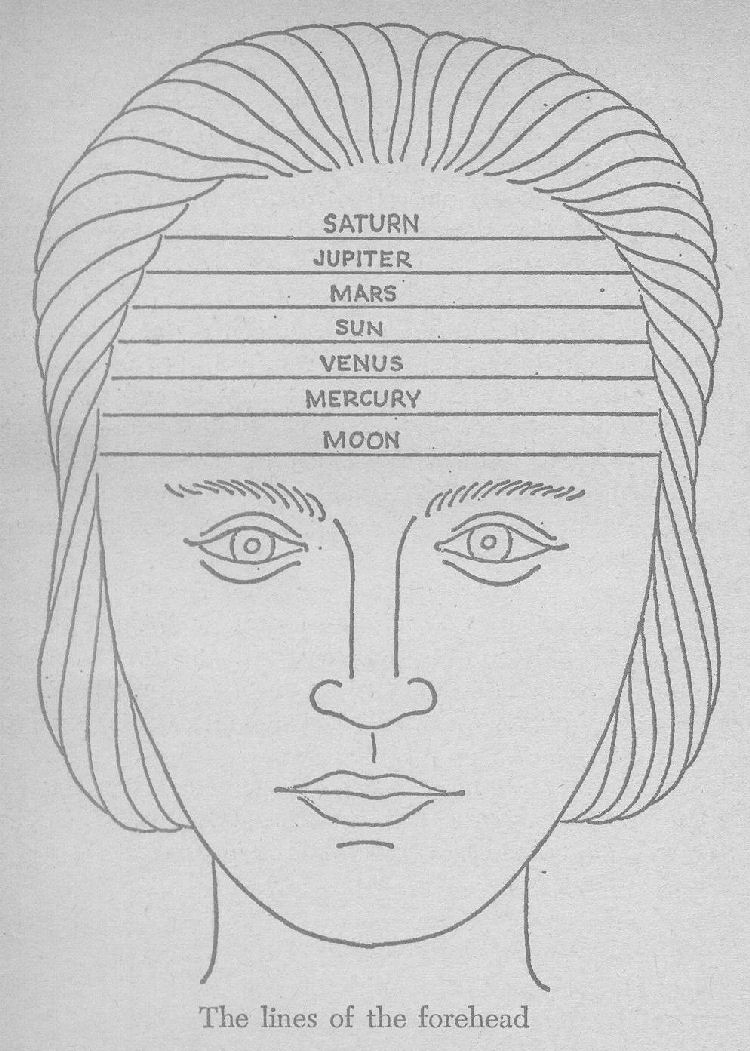12.1.7.6. THE LINES OF THE FOREHEAD – METOPOSCOPY
12.1.7.6. THE LINES OF THE FOREHEAD
***********************************
METOPOSCOPY
************
This phase of physiognomy was developed by Jerome Cardan during the 1500’s. He interpreted the horizontal lines of the forehead in astrological terms, naming them from the top downward, in the planetary order of Saturn, Jupiter, Mars, the Sun, Venus, Mercury, and the Moon.
A firm, straight cross line at any of those positions indicates a person with the finer attributes of that particular planet. Broken lines show uncertainty, while those that are widely separated signify a complete lack of planetary attributes.
Wavy cross lines indicate travel, or desire for new things. Cardan’s interpretation on that score was truly ahead of his time. Ordinary wavy lines indicated travel by sea, which on the line of Venus would indicate a pleasure trip. If the ends of that line turned down, it meant that the travel would be on land.
No significance was placed on lines that turned up at the ends, because that means travel by air, which was unknown in 1558, when Cardan’s opus first appeared in print. Today, an airline passenger will do well to note the forehead lines of other persons on the plane. It may be surprising to learn how many turn up at the ends.
Sinuous lines, by the very grace of their curves, point out persons who have the most adaptable traits of their indicated planets. Short, vertical lines mean danger to the lines that they cross, even to an abrupt end to a career. Sharp, angular crossings completely nullify the effect of the planetary lines, especially when they are repeated.
So a frown, a narrowing of the brows, can reveal much, according to metoposcopy, a psychic science which may be coming into its period of full development and appreciation.








Leave a Reply